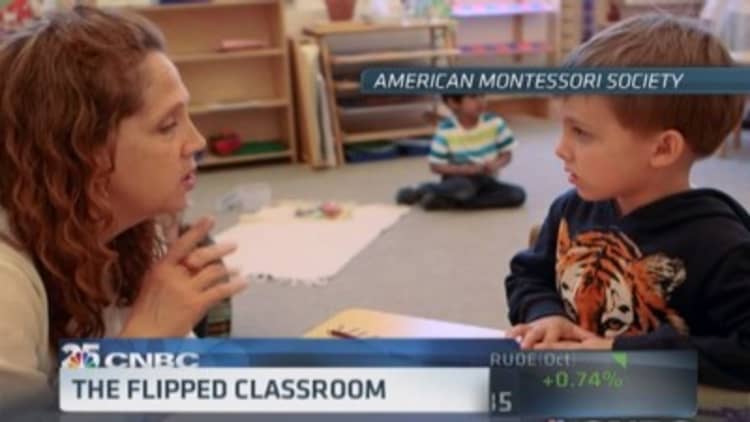There is much talk these days about the ways colleges, and perhaps the government, can reduce the cost of higher education. But one option for reducing expenses has mostly flown under the radar: radically transforming the textbook.
While soaring debt loads at high-priced private colleges attract the most media attention, the College Board has noted that half of all full-time students attend institutions that charge tuition and fees of $10,300 or less. And for students at those institutions, textbooks can be a big chunk of the cost—and even the difference between affordability and unaffordability. The College Board estimates that the average student spends $1,400 per year on textbooks and course materials. Over the course of four years, that would be the equivalent of almost one-fifth of the average $29,400 in debt student borrowers carry at graduation.
David Ernst, the executive director of the Open Textbook initiative at University of Minnesota, Twin Cities, points to data that illustrates the challenge some students have covering the costs of textbooks: A Minnesota State University Association survey found 59 percent of students had been forced to delay purchasing textbooks until they'd received a financial aid check, and seven in 10 students had forgone purchasing a required textbook due to cost.
Read MoreCan your college major guarantee a job?
But those costs may start going down. A small, but growing, number of schools are beginning to explore the use of open-source materials instead, an option that—if adapted widely—could one day render traditional textbooks obsolete.

"The educational publishing industry is fundamentally broken when it comes to serving the purpose it's designed to serve," said Kim Thanos, co-founder of Lumen Learning, a Portland, Oregon, start-up at the forefront of this movement. It has helped more than 50 colleges facilitate what are known as open textbooks.The basic concept: Curate the vast quantity of academic material in the public domain into courses and let instructors adapt the information as they see fit. No textbook necessary.
Read MoreThe case for liberal arts education
The early adopters have mostly been community colleges, whose students are generally most sensitive to high textbook prices. After looking at the data on how textbook prices were causing students to drop courses, for example, Tidewater Community College in Norfolk, Va., last year became one of the first in the country to offer a complete degree without textbooks: the Z-Degree, an associate of science in business administration produced in partnership with Lumen Learning.
Linda S. Williams, a professor of business administration at Tidwewater and the faculty's team lead for the development of the Z-Degree, said students have so far enrolled in more than 1,100 Z-Degree courses. "This is an opportunity for us to strip a course down to the learning outcomes and then select only the content that is directly tied to the outcome," Williams said. "There's no teaching Chapter 8 just because it's between 7 and 9."
Read MoreHow much would you pay to get your kid in Harvard?
She estimates the adoption of open-source materials in place of traditional textbooks has saved students a total of about $100,000 in materials. (The school pays a $5 per-student, per-course fee that it is contracted to pay to Lumen.) And such cost savings may not be unusual. A report from Student PIRGs, a student advocacy group, found that replacing traditional textbooks with open content could reduce materials costs by as much as 80 percent.
David Wiley, the chief academic officer at Lumen Learning and a former associate professor of Instructional Psychology & Technology at Brigham Young University, predicts that sometime soon—maybe as quickly as the next five years—open source materials could lead to the end of textbooks for lower level and general education courses, especially at community colleges where students are most cost-sensitive.
"When you can see time after time after time data showing that students learn more and pay significantly less—why would you ask students to spend more money to earn less?" he asked.
The textbook industry, of course, sees things differently. David Anderson, Executive Director of Higher Education at the Association of American Publishers, an industry trade group, said that the open source evangelists are missing much of what the industry is already doing to bring down costs. He points to a recent demonstration he saw of an art history textbook: the print edition has a list price of $207.95 but an online version, complete with a navigable tour of Versailles, is just $70.
"Improved platforms will dramatically reduce costs and improve quality," Anderson said.
Everyone agrees on that. The question, however, is what role traditional textbook publishers and open-source providers will play in the new world of textbooks.
—Zac Bissonnette, special to CNBC.com

